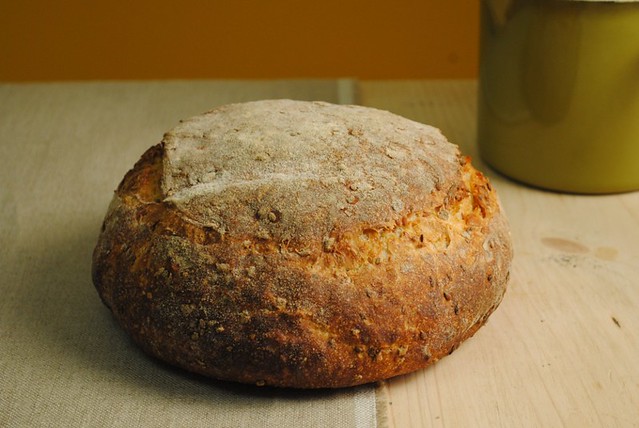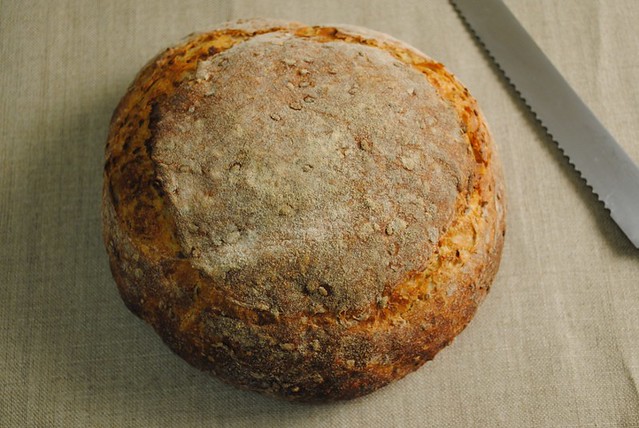Top seed
I often adapt recipes, for all sorts of reasons. It may be that I just make a substitution for an ingredient I don’t have or can’t easily get hold of. Sometimes, if the recipe is a complex one, and I’m feeling lazy, I’ll approach it in a more reckless manner than usual, throwing together what I think is a reasonable approximation of the original and relying on instinct to guide me. That’s what I did yesterday when I decided to have a go at an already-adapted recipe from Jeffrey Hamelman’s book Bread.
Steve B, author of the now-discontinued (but still online) blog Bread cetera, posted about his version of Hamelman’s five-grain levain a few years ago, and it looked good. I decided, without much forethought, to have a go myself. The Bread cetera recipe was scaled to produce three loaves. I only wanted to make one but, rather than properly calculating the reduced amounts, I made some rough guesses and hoped for the best. This isn’t something I would normally do, but I just didn’t have the time or inclination to do my maths.
The results far exceeded my expectations. I made do with just two of the five grains in Hamelman’s original recipe (rye and linseed being all I had), but the loaf was a winner. The only problem now is trying to remember the proportions and timings so that I can recreate it.
Maybe there’s a lesson there to be learned. On the other hand, sometimes it’s exactly that spontaneous approach that produces great results.



